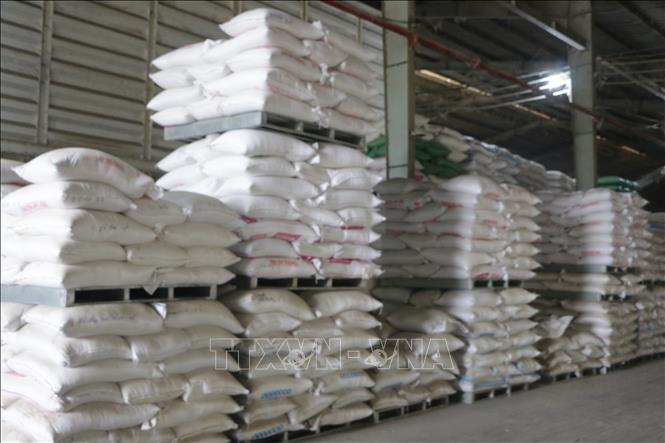
Specifically, the price of 5% broken fragrant rice was offered at 415-430 USD/ton last week, down from 420-435 USD the previous week. A trader in An Giang said market demand remained weak.
In the domestic market, according to the Institute of Strategy and Policy on Agriculture and Environment, in Can Tho, Jasmine rice is still priced at VND8,400/kg, the same as last week; IR 5451 rice is VND6,200/kg; ST25 is VND9,400/kg; OM 18 alone is VND6,800/kg.
In Dong Thap , IR 50404 rice costs 6,500 VND/kg, OM 18 is 6,800 VND/kg. In Vinh Long, OM 5451 rice is 7,800 VND/kg, OM 4900 is 8,100 VND/kg.
In An Giang, according to the provincial Department of Agriculture and Environment, the prices of fresh rice varieties mostly remained stable, as follows: IR 50404 was purchased at 4,800 - 5,000 VND/kg; OM 5451 from 5,300 - 5,500 VND/kg; OM 18 at 5,500 - 5,700 VND/kg; Dai Thom 8 from 5,600 - 5,800 VND/kg; OM 380 around 5,700 - 5,900 VND/kg.
In An Giang's retail market, rice prices are mostly stable: regular rice 12,000 - 14,000 VND/kg; Thai fragrant rice 20,000 - 22,000 VND/kg; Jasmine 16,000 - 18,000 VND/kg; white rice 16,000 VND/kg, Nang Hoa 21,000 VND/kg, Huong Lai 22,000 VND/kg, Taiwanese fragrant rice 20,000 VND/kg, Soc Thuong 17,000 VND/kg, Soc Thai 20,000 VND/kg, Japanese rice 22,000 VND/kg.
The price of IR 50404 raw rice remains at 8,100 - 8,250 VND/kg, IR 504 finished rice is from 9,500 - 9,700 VND/kg; OM 380 raw rice is from 7,800 - 7,900 VND/kg; OM 380 finished rice fluctuates at 8,800 - 9,000 VND/kg.
For by-products, the price of various by-products ranges from 7,400 - 10,000 VND/kg. The price of dry bran is at 9,000 - 10,000 VND/kg.
Regarding the production situation, according to the Ministry of Agriculture and Environment , by October 27, the provinces and cities in the Mekong Delta had basically completed the autumn-winter crop planting plan and at the same time deployed the 2025-2026 winter-spring crop planting.
Specifically, the Autumn-Winter crop has been planted on 763,000 hectares, reaching 102.8% of the plan. Currently, localities have harvested about 325,000 hectares, with an average yield of 56.77 quintals/hectare, for an estimated output of 1.85 million tons of rice. The Summer-Autumn crop has been sown on 162,000 hectares, reaching 92.57% of the plan (175,000 hectares).
For the 2025 - 2026 Winter-Spring crop, the whole region has planted 108,000 hectares out of the total planned area of 1.266 million hectares.
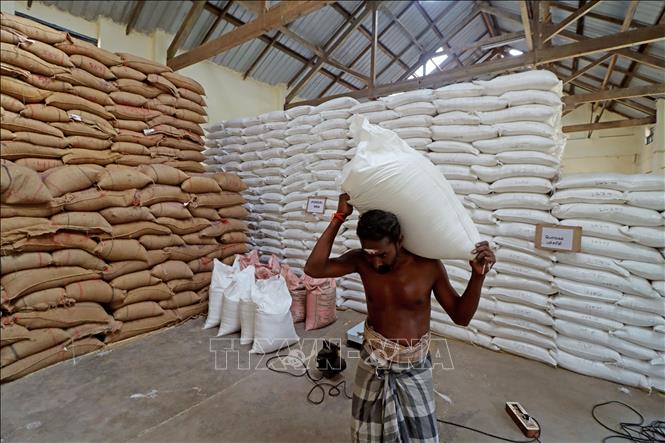
While Vietnam's rice export prices have fallen, those in India have remained stable despite slow export demand, as storms could reduce output.
In India, 5% broken parboiled rice prices were quoted at $344-$350 a tonne, unchanged from last week. India’s 5% broken white rice prices were quoted at $350-$360 a tonne this week. The paddy crop is ready for harvesting, but heavy rains are likely to impact yields, according to a trader in Kolkata.
In Thailand, benchmark 5% broken rice was quoted at $340 a tonne, up slightly from $337 last week, ending a six-week losing streak and recovering from an 18-year low. Demand for Thai rice was generally unchanged from last week, a Bangkok-based trader said, adding that for 5% broken rice, Thailand had many competitors such as Myanmar and Pakistan with cheaper prices, while supplies were plentiful as the harvest was underway in many parts of the country.
In another development, Bangladesh has decided to extend the export of fragrant rice by one month until November 30. The decision is aimed at giving traders more time to meet their delivery targets amid supply chain and transportation delays. Bangladesh has allowed some exports of premium rice this year after domestic production exceeded demand. However, the government is closely monitoring the market to ensure that exports do not negatively impact domestic rice prices, especially amid high food inflation.
Regarding the US agricultural market, on October 31, US soybean futures climbed to a 15-month high and recorded the strongest monthly increase in nearly 5 years, after a price increase fueled by the possibility of resuming exports to China.
Soybean prices surged above their highest level since July 2024 reached in the previous session after US Treasury Secretary Scott Bessent said China had agreed to buy 12 million tonnes of US soybeans through January 2025 and 25 million tonnes a year over the next three years. China had previously shunned US soybeans due to bilateral trade tensions and instead turned to South American soybeans.
The commitment is lower than the amount of soybeans the US has exported to China in recent years, according to Rich Nelson, chief strategist at Allendale. He also believes that the commitment may still be higher than what China will actually buy, as it has been shifting to top exporter Brazil. In fact, over the next two years, the number could easily fall below 20 million tonnes, or even as low as 18 million tonnes, Nelson added. However, he stressed that compared to a no-deal scenario, this is still a positive development.
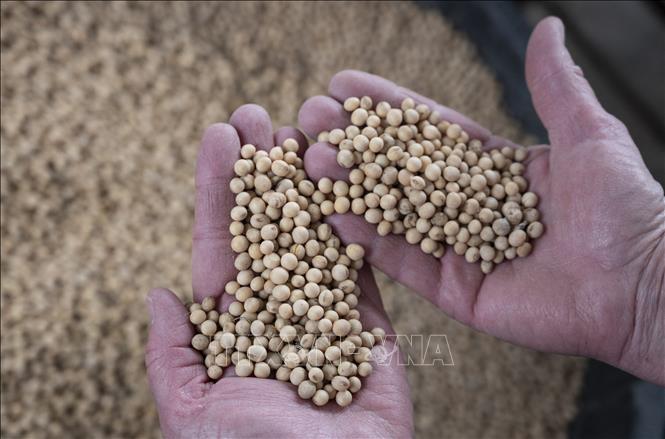
The price of soybeans in the nearest futures contract (Sv1) on the Chicago Board of Trade (CBOT) ended the session with a gain of 7.5 US cents, to 11.1524 USD/bushel, thereby recording the strongest monthly increase since December 2020.
Traders remain cautious about whether China’s soybean purchase pledge will translate into actual U.S. export orders. Analysts at Commerzbank agree, saying the market is still waiting for confirmation from China. Until that happens, they say, the upside potential for soybeans is likely to be limited.
CBOT corn and wheat futures also rose slightly, although the US and China did not announce specific trade commitments for these crops. Corn rose 1.25 cents to $4.3150 a bushel, while wheat ended the session up 9.75 cents to $5.34 a bushel. Both grains have increased in price over the past month (1 bushel of wheat/soybeans = 27.2 kg; 1 bushel of corn = 25.4 kg).
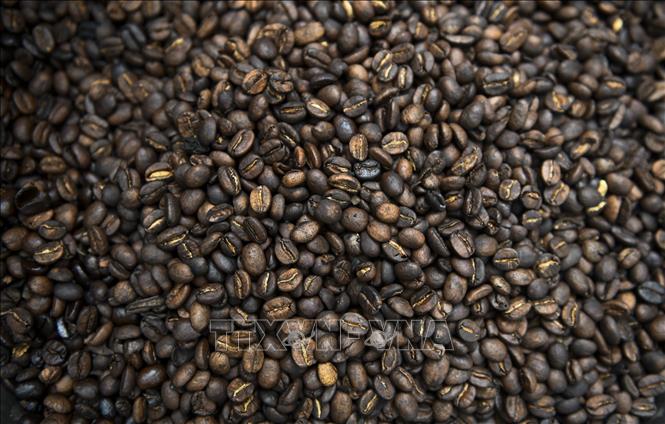
The world coffee market ended the last session of last week with a split. Robusta coffee on the London exchange was the center of the decline, losing 98 USD/ton, equivalent to 2.17%, to 4,524 USD/ton. In contrast, Arabica coffee prices on the New York exchange remained almost unchanged, increasing slightly by 0.05 US cents/lb, closing at 392.05 US cents/lb (1 lb = 0.4535 kg).
After several days of continuous price increases, investment funds have been selling in order to take profits before entering the new month, creating great pressure on Robusta prices. Meanwhile, Arabica prices have remained stable thanks to long-term supporting factors such as very low inventories and La Nina weather risks in Brazil. News about the unclear outcome of US-Brazil tariff negotiations has also caused the Arabica market to slow down.
Meanwhile, in the domestic market, on November 1, coffee prices in key regions of the Central Highlands dropped sharply, bringing the average price in the whole region down to 116,800 VND/kg. This decrease erased the increase of the previous days.
Specifically, in Dak Nong (old), the price decreased by 1,200 VND/kg, to 117,000 VND/kg, in Dak Lak decreased by 1,200 VND/kg to 116,800 VND/kg. The price in Gia Lai also decreased by 1,200 VND/kg, to 116,000 VND/kg and in Lam Dong decreased by 1,300 VND/kg, to 115,500 VND/kg.
Source: https://baotintuc.vn/thi-truong-tien-te/gia-gao-xuat-khau-giam-nhe-do-nhu-cau-yeu-20251102141155749.htm






![[Photo] Opening of the 14th Conference of the 13th Party Central Committee](https://vphoto.vietnam.vn/thumb/1200x675/vietnam/resource/IMAGE/2025/11/05/1762310995216_a5-bnd-5742-5255-jpg.webp)



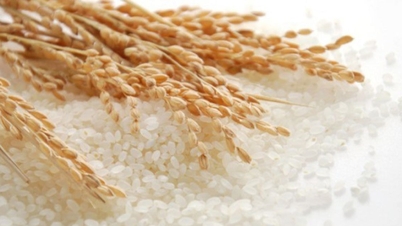



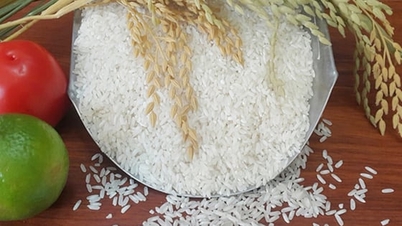























![[Photo] Panorama of the Patriotic Emulation Congress of Nhan Dan Newspaper for the period 2025-2030](https://vphoto.vietnam.vn/thumb/1200x675/vietnam/resource/IMAGE/2025/11/04/1762252775462_ndo_br_dhthiduayeuncbaond-6125-jpg.webp)




















































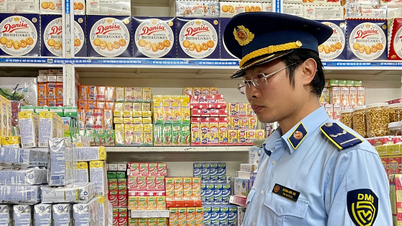






















Comment (0)